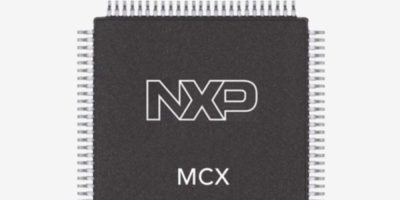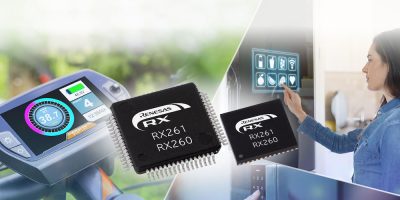Renesas has announced new AnalogPAK ICs, including lower power and automotive-qualified devices along with the industry’s first programmable 14-bit SAR ADC (Successive-Approximation Register Analog-Digital Converter).
AnalogPAK devices are part of Renesas’ GreenPAK Family of Programmable Mixed-Signal Matrix products: cost-effective, NVM programmable devices which enable innovators to integrate many system functions while minimising component count, board space, and power consumption. GreenPAK and AnalogPAK ICs deliver functional replacement of mixed-signal standard products and stand-alone discrete circuits. They also provide reliable hardware supervisory functions for SoCs and microcontrollers. GreenPAK and AnalogPAK devices provide benefits for virtually any application, including consumer electronics, computing, white goods, industrial, communications, and automotive. Using Go Configure Software Hub and the GreenPAK Development Kit, designers can create and program a custom circuit in minutes.
Renesas’ new SLG47011 AnalogPAK device delivers a new level of performance for configurable analog integrated circuits. It includes a rich set of digital and analog features including programable multichannel 14-bit SAR ADC with Programmable Gain Amplifier (PGA). The SLG47011 also has flexible, user-defined power saving modes for all macrocells that enable designers to switch off some blocks in sleep mode and therefore reduce power consumption to the µA level.
The SLG47011 can be used to extend the performance of, or to offload an MCUs. It can also be used in conjunction with an MCU to replace a complex analog front-end (AFE). Key functions supported by the SLG47011 include measurement, data processing, logic control and data output.
In addition to the SLG47011, Renesas is introducing two other AnalogPAK devices, the cost-optimised SLG47001/3, and the automotive-qualified SLG47004-A.
SLG47001/3 AnalogPAK Devices
The SLG47001 and SLG47003 enable the implementation of precise measurement systems with a low price point and a very compact package to address applications such as gas sensors, power meters, measurement equipment, servers, wearables, industrial robots, industrial and smart home sensor modules.
• Two ultra-low offset op-amps – 9 µV (max.)
• Two 10-bit digital rheostats
• Six-channel sampling comparator
• Analog switch
• Voltage reference
• 59-bytes pattern generator
• 2k/10k/25MHz oscillators
• Fully configurable blocks: LUTs, flip-flops, shift registers, timers, counters, delays
SLG47004-A AnalogPAK Device
The SLG47004-A delivers the functionality of the SLG47004 devices with the addition of automotive qualification Grade 1 for applications such as infotainment, navigation, chassis and body electronics, automotive display clusters and more. The new devices support a temperature range of -40°C to 125°C.
Device Availability
All of the new AnalogPAK devices are available today from Renesas and its authorised distributors, along with customised development kits. The SLG47011 comes in a 2.0 x 2.0 mm 16-pin STQFN package. The SLG47001 is packaged in a 2.0 mm x 3.0 mm 20-pin STQFN, while the SLG47003 comes in a 3.0 mm x 3.0 mm 24-pin STQFN. The SLG47004-A is available in a 4.0 mm x 4.0 mm 24-pin TQFN.
More information on all the new offerings is available at https://www.renesas.com/analogpak.







